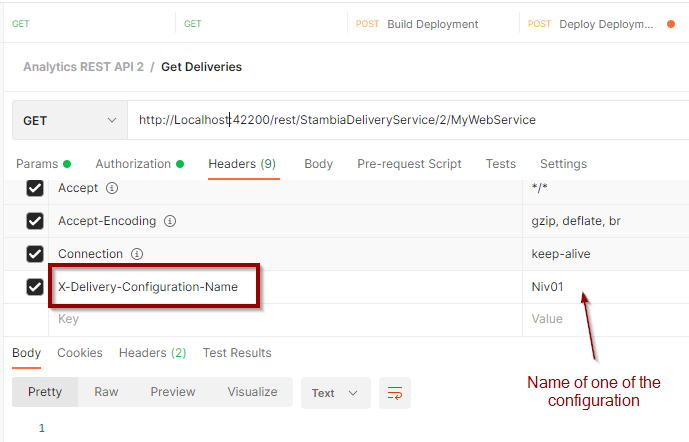Choosing the Configuration at invocation
When working with multi-Configuration Deliveries, you can usually choose which configuration to use at execution, using the dedicated parameters for that.
When invoking a Multi-Configuration Delivery exposed as web service, you can choose which Configuration to use.
Choosing the Configuration
When trying to invoke a multi-Configuration Delivery exposed as web service, you'll have this kind of message returned if you do not specify the Configuration:
"You have to set configuration code on externalized deliveries, available code: INT_001 INT_002"
An HTTP Header which can be passed alongside the invocation request to choose the Configuration that should be used for the invocation:
X-Delivery-Configuration-Name
Example with Postman:

When working with multi-Configuration Deliveries, you can use this HTTP Header to define the Configuration to use.
Note that this HTTP Header is ignored when invoking a standard Delivery.
